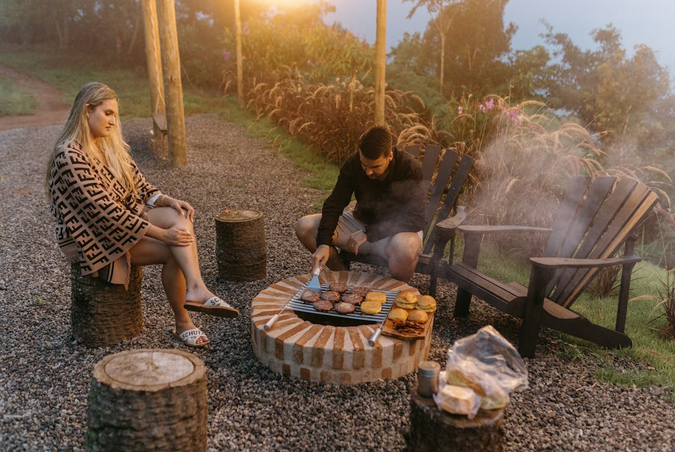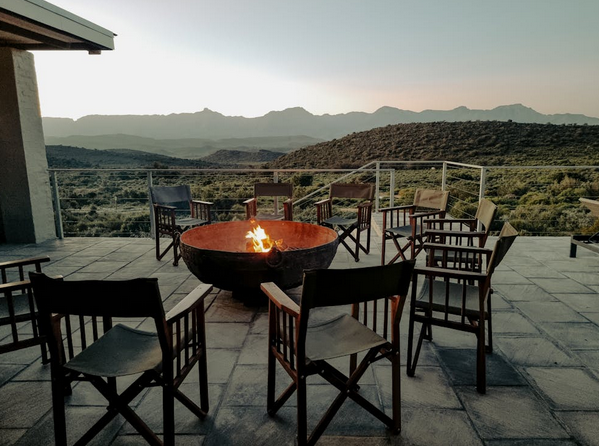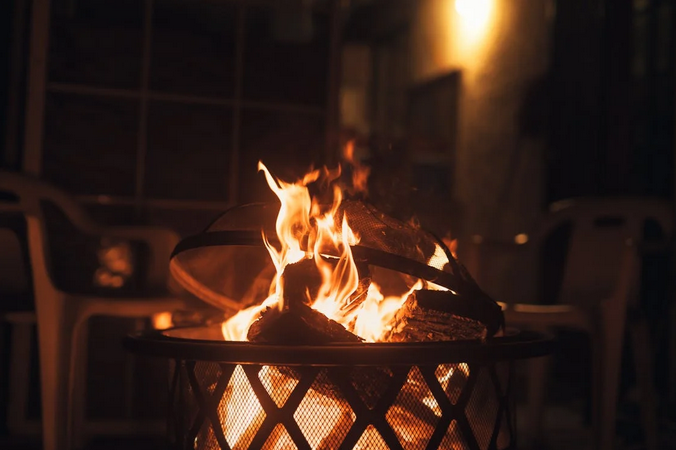How to Prevent Fire Pit Fun From Turning Into a Firefighter Visit

Outdoor fire pits have a magical pull. They draw people in like moths to a flame—literally. But before you kick back and roast marshmallows, there’s a fine line between cozy and catastrophe. If you’re already diving into outdoor landscape renovations, this is your nudge to take fire pit safety just as seriously as design choices.
Choose the Right Spot (Your Lawn Will Thank You)
Placing your fire pit in the middle of a dry, patchy lawn is a bit like parking a race car in a sandbox, it looks wrong, and it is. You need solid, nonflammable ground. Think gravel, concrete, or a patio slab. And space? Keep it at least 10 feet away from structures, fences, trees, and anything that might scream “I catch fire easily.” Also, avoid setting it up beneath a roof or tree canopy. It may seem like harmless shade during the day, but at night, those low-hanging branches turn into lurking hazards.
Think Beyond the Flame
Wind is a sneaky troublemaker. One light gust and suddenly sparks are dancing across your yard like they’re in a Broadway show. Use wind guards if your area is breezy, and always check the direction before lighting anything. And let’s not pretend embers aren’t the real culprits. Use a fire screen, not just for looks, but to keep the crackling party inside the pit. If kids or pets are around, set clear boundaries. A ring of stones or even a chalk line can act as a no-go zone.
Fuel Wisely or Regret Loudly

Not all wood is created equal. Seasoned hardwood burns cleaner and with less smoke than softwood. Avoid trash, leaves, or any mystery logs. Burning these is asking for lungfuls of who-knows-what. And yes, lighter fluid gets things going fast, but it’s also how backyards become headlines. Stick to fire starters meant for wood fires. Slow and steady wins this race.
Never Leave It Unwatched (Seriously, Never)
The moment you leave a fire unattended is when things go sideways. Maybe the wind picks up. Maybe someone tosses in something they shouldn’t. It’s not just about being cautious, it’s about being present. Keep a bucket of water or sand nearby. A garden hose works too, but don’t rely on running inside to grab one mid-crisis. By the time you’re back, the damage could already be done.
Shut It Down Right After

Just because the flames are gone doesn’t mean the fire’s out. Embers stay hot for hours, sometimes longer. Pour water slowly, stir the ashes, and pour again. Feel for heat with the back of your hand at a safe distance. If it’s still warm, you’re not done. Letting the fire die on its own sounds poetic, but it’s also risky. Douse it properly or prepare for the possibility of unintended drama. Fire pits are a great addition to any backyard hangout, but they’re not something to take lightly.
With the right prep, you can enjoy the warmth without inviting disaster. If you’re thinking of adding one during your outdoor updates, take a moment to read up on what matters, because when safety’s ignored, things heat up in all the wrong ways. And if you’re already knee-deep in outdoor landscape renovations, now’s the time to plan smart.